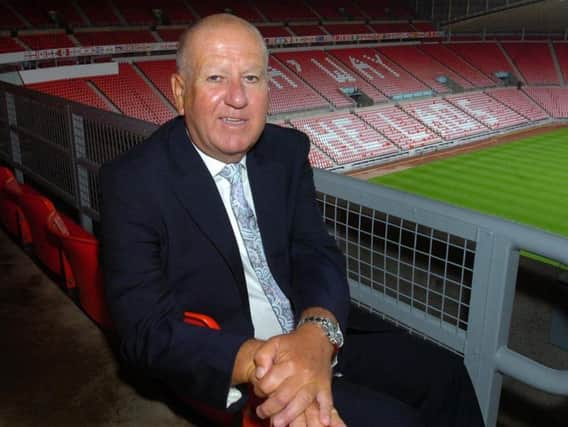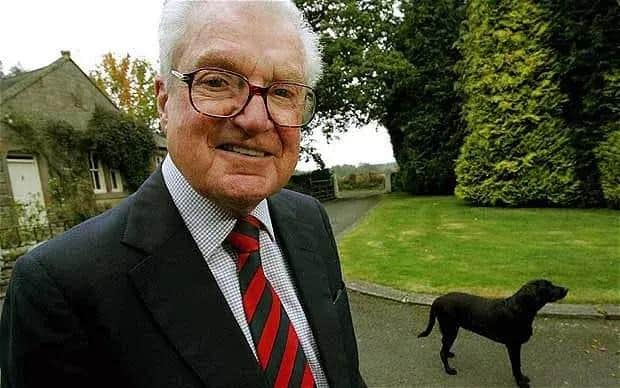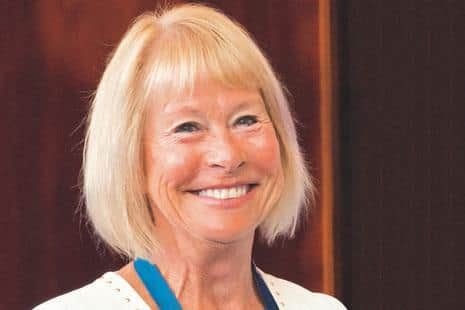Discover the top 30 people who have made Sunderland a great city


1. St. Benedict Biscop
The Patron Saint of Sunderland, Benedict Biscop built St Peter’s church and founded the monastery and library of Wearmouth-Jarrow in the 7th century, which set a new standard in art, design, ministry, learning and worship.
2. Venerable Bede


Bede was born in 672 or 673AD around Wearmouth, now known as Monkwearmouth, in Sunderland. When he was seven, he was taken to the monastery of St Peter at Wearmouth. Here he was taught how to read, write and pray by the Abbot, Benedict Biscop and the monks, and went on to become one of the first to write books in English.
3. Edward Thompson
After setting up a stationery shop in 1867 using the winnings he made from a bet on horses, Edward Thompson went on to become an established businessman. His self-named, family-run printing business employed more than 1,000 people at its height, which later led to family member Phil Cronin setting up Tombola in 2005, the UK’s biggest online bingo company.
4. Sir Bob Murray


Sunderland AFC’s longest serving chairman, Sir Bob Murray was credited with saving the club from bankruptcy in the 1980s and was also heavily involved in setting up the City Academy Schools.
5. David Puttnam
Oscar-winning filmmaker and the first chancellor of the University of Sunderland, David Puttnam was awarded Freedom of the City in 2007 for his role as an international ambassador for the area.
6. Sir Tom Cowie
An entrepreneur and philanthropist, Tom Cowie was chairman of Sunderland AFC between 1980 – ‘86 and dedicated his time to supporting grassroots projects to address problems in disadvantaged areas in the North East. In recognition of his financial support to projects, the University of Sunderland renamed its St Peter’s Campus the ‘Sir Tom Cowie Campus at St Peter’s’.
7. Frank Nicholson
Former managing director of Vaux Breweries, Frank Nicholson set up the Sunderland Youth Centre which developed into the Sunderland Youth Enterprise Trust, providing bursaries to young people who demonstrated entrepreneurship. He was recognised in the Queen’s Awards for Enterprise Promotion in 2010.
8. Dr Marion Philips
Marion Phillips was Sunderland’s first female MP and elected as a Labour candidate in the first election in which men and women had equal voting rights.
9. Dame Irene Lucas-Hays
Chair of Hays Travel and former chief executive of Sunderland City Council, Dame Irene Lucas-Hays is a placemaker and businesswoman who recently received her damehood in the New Year’s Honours list in 2021 for services to training, education and young people.
10. Thomas Menville
Shipbuilding in Sunderland began in 1346, with Thomas Menville becoming the first to be recorded as building a ship in Hendon.
11. Ellen Bell MBE
Ellen Bell became Sunderland’s first female councillor in 1919 and was a champion for public health. She sat on the committee of district nurses, ran a youth group in the East End, supported local artists by giving them spaces in which to work, and was also secretary of the Women’s Conservative Association, representing the North at national meetings. In 1939, she received an MBE for her lifelong dedication to the people of Sunderland.
12. William Doxford
In 1837, William Doxford built a small wooden ship on the River Wear, before opening a shipyard in 1840, which went on to produce ships until 1988. During WWII, there were nine shipyards in Sunderland and Doxford’s not only produced ships faster than the other eight, but it launched the greatest general cargo ship output of all shipyards on British mainland.
13. Thomas Pratt
Penshaw monument, based on the design of the Theseion, the Temple of Hephaestus in Athens, was built by Thomas Pratt of Sunderland in 1844 using about £6,000 raised by public subscription.
14. Frank Caws
English architect Frank Caws designed Sunderland’s Elephant Tea Rooms, as well as Corder and Sydenham Houses and Holmlands Park in Ashbrooke. He was also involved with social improvement in the area, and in 1871 was involved in establishing the YMCA in Sunderland.
15. Richard Thornton
Founder and developer of Sunderland’s Empire Theatre, Richard Thornton from South Shields, formed a partnership with Edward Moss and Oswald Stoll to form an organisation which transformed the northern provincial theatres of the early 1900s.
16. Emili Sandé
Sunderland-born singer-songwriter Emlie Sandé has achieved international success with her music and is the first female chancellor at the University of Sunderland, inspiring the next generation of artists and performers.
17. Thomas Paine
Sunderland’s original Wearmouth Bridge was designed by Thomas Paine and was the longest single-span cast iron bridge in the world at that time. It was a catalyst to Sunderland’s growth and was later rebuilt in 1857, then again in 1927.
18. James Allan
The founder of Sunderland football club, James Allan was also a footballer and played in the first known Sunderland game – scoring twice in the first game in which the lads scored.
19. Ralph Hutchinson
Ralph Hutchinson was a timber merchant and shipbuilder, who in 1850 hired the architect George Middlemiss to construct Hutchinson’s Buildings, Sunderland’s first purpose-built shops. The corner building is best known as Mackie’s Corner, which refers to the ground floor shop’s first tenant, Robert Mackie.
20. Florence Collard
When men joined the army during WWII, women stepped up to support the shipbuilding efforts in Sunderland and helped to deliver food supplies across Britain. Florence Collard worked as a welder at Bartram & Sons shipyard and was the first woman to be granted membership of the Boilermakers’ Society Union.
21. Hope Winch
Hope Winch was the first head of the University’s pharmacy department, which at the time was Sunderland Technical College. She taught the entire course herself and by 1930, her pharmacy department was a great success and all pharmacy teaching in the region was moved to her lab. Her legacy helped the university to grow its excellent pharmacy department that exists today.
22. George Binns
George Binns opened a haberdashery store on High Street West in 1811, which went on to become one of Sunderland’s best known department stores – Binns.
23. Frank Styles
North East artist Frank Styles has captured the spirit of Sunderland’s past and present through his large-scale murals across the city, from historical scenes to beautiful butterflies.
24. Elizabeth Donnison
Elizabeth Donnison was a Sunderland woman who was known for her generosity among local people. When she passed away, she left a large sum of money in her will with instructions to set up a free school next to the workhouse. The school took in 36 girls and they were taught to read, write, sew and sing.
25. Thomas Hawksley
An engineer whose work became renowned throughout Victorian Britain, Thomas Hawksley designed Ryhope Pumping Station and was the first person to develop an ‘always on’ pressurised water distribution system.
26. Bernard GilpinRector of Houghton-le-Spring, Bernard Giplin was a generous man and every Sunday between Michaelmas (Houghton Feast) and Easter, he would open the rectory and feed the poor of the parish with a roasted hog or ox.
27. William Etty
It’s thought that Holy Trinity Church was designed by York architect William Etty, who also played a part in fitting the interior.
28. George Hudson
George Hudson was responsible for building Sunderland’s railways and the South Docks, enabling Sunderland to compete with other developing ports in the North East.
29. Sir Robert Appleby Bartram
Bartram was a shipbuilder and took over Bartram & Sons from his grandfather in 1925. He was also a generous benefactor to charitable and educational bodies in Sunderland. He gave £10,500 to Sunderland Town Council in the late 19th century to establish technical scholarships, which led to the founding of Sunderland Technical College in 1901.
30. Katharine Backhouse
Last but certainly not least, Katherine Backhouse, who lived in the stately Ashburn House in Backhouse Park, was a Quaker involved in the anti-slavery movement, raising awareness of the human cost of sugar, cotton and rum shipped from slave plantations in the West Indies. The determined Quaker community handed out leaflets, went door knocking and rustled petitions until the people of Sunderland began to boycott shops selling sugar from the West Indies and the city became known for stocking only ‘Freeman’s sugar’, which came from the East Indies and did not cost human lives.
Find out more
Sunderland has been on a journey of transformation since becoming a city 30 years ago.
For more information about Sunderland’s 30 years as a city visit: https://www.mysunderland.co.uk/30years